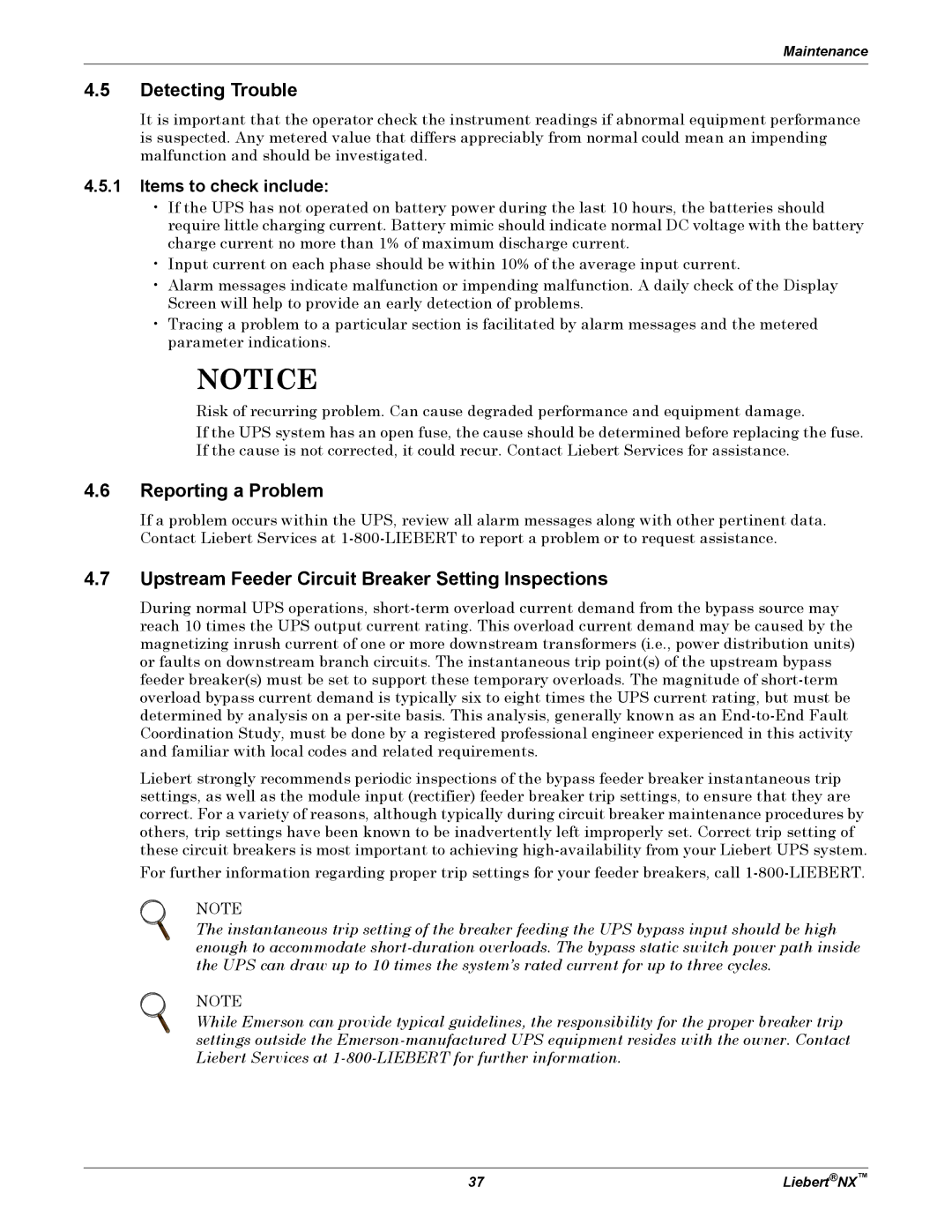
Maintenance
4.5Detecting Trouble
It is important that the operator check the instrument readings if abnormal equipment performance is suspected. Any metered value that differs appreciably from normal could mean an impending malfunction and should be investigated.
4.5.1Items to check include:
•If the UPS has not operated on battery power during the last 10 hours, the batteries should require little charging current. Battery mimic should indicate normal DC voltage with the battery charge current no more than 1% of maximum discharge current.
•Input current on each phase should be within 10% of the average input current.
•Alarm messages indicate malfunction or impending malfunction. A daily check of the Display Screen will help to provide an early detection of problems.
•Tracing a problem to a particular section is facilitated by alarm messages and the metered parameter indications.
NOTICE
Risk of recurring problem. Can cause degraded performance and equipment damage.
If the UPS system has an open fuse, the cause should be determined before replacing the fuse. If the cause is not corrected, it could recur. Contact Liebert Services for assistance.
4.6Reporting a Problem
If a problem occurs within the UPS, review all alarm messages along with other pertinent data. Contact Liebert Services at
4.7Upstream Feeder Circuit Breaker Setting Inspections
During normal UPS operations,
Liebert strongly recommends periodic inspections of the bypass feeder breaker instantaneous trip settings, as well as the module input (rectifier) feeder breaker trip settings, to ensure that they are correct. For a variety of reasons, although typically during circuit breaker maintenance procedures by others, trip settings have been known to be inadvertently left improperly set. Correct trip setting of these circuit breakers is most important to achieving
For further information regarding proper trip settings for your feeder breakers, call
NOTE
The instantaneous trip setting of the breaker feeding the UPS bypass input should be high enough to accommodate
NOTE
While Emerson can provide typical guidelines, the responsibility for the proper breaker trip settings outside the
37 | Liebert®NX™ |
